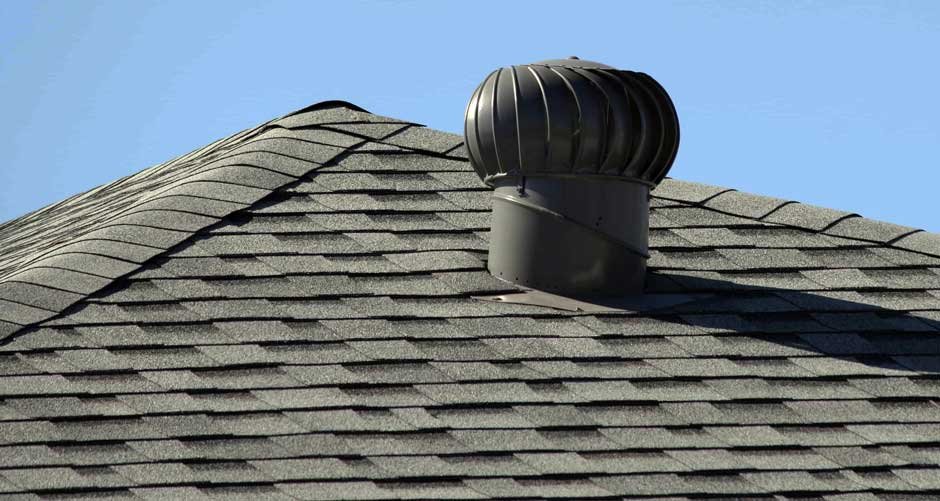The importance of proper roof ventilation in residential homes is often underestimated. However, it plays a crucial role in maintaining a healthy and comfortable living environment. This article will focus on various roof ventilation solutions that can significantly improve indoor air quality and regulate temperature, ensuring that you breathe easy in your home.
Understanding Roof Ventilation
Roof ventilation is the process of ensuring adequate air circulation in the attic and throughout the house. It is essential for maintaining a comfortable and healthy living environment by regulating indoor air quality and temperature. A well-ventilated home can prevent several issues, such as excessive heat, moisture buildup, and air stagnation.
Benefits of Proper Roof Ventilation
- Improved indoor air quality: Proper roof ventilation helps maintain a consistent flow of fresh air, reducing indoor air pollutants and allergens, and ensuring a healthier environment for occupants.
- Reduced energy consumption: Adequate roof ventilation can help maintain a balanced indoor temperature, reducing the strain on heating and cooling systems and leading to energy savings.
- Prevention of moisture-related issues: Roof ventilation helps regulate attic humidity levels, preventing condensation, mold, mildew, and potential structural damage due to excess moisture.
Types of Roof Ventilation Systems
There are two main types of roof ventilation systems: passive and active.
- Passive ventilation systems:
- Ridge vents: Installed at the peak of a sloped roof, ridge vents allow warm air to escape without the need for mechanical assistance.
- Soffit vents: Positioned in the soffit area under the eaves, soffit vents allow cool air to enter the attic, replacing the warm air that rises and escapes through ridge vents.
- Gable vents: Installed on the exterior wall near the roof peak, gable vents allow air circulation in the attic, promoting a natural airflow.
- Active ventilation systems:
- Attic fans: These mechanical devices help draw out warm air and maintain proper air circulation in the attic.
- Powered roof vents: Installed on the roof surface, these devices facilitate air exchange in the attic by actively drawing out hot air and moisture.
Selecting the Best Roof Ventilation Solution
When choosing the right roof ventilation solution, consider the following factors:
- Climate: Different climates may require specific ventilation solutions. For example, homes in hot and humid regions may benefit from active systems, while those in colder climates may find passive systems more suitable.
- House design: The design and layout of your home, including the roof type and attic space, will determine the most effective ventilation system.
- Local building codes: Ensure that your chosen roof ventilation solution complies with local building regulations and guidelines.
Installation and Maintenance of Roof Ventilation Systems
- Proper installation guidelines: To achieve optimal performance, it is crucial to follow proper installation guidelines for your chosen ventilation system. This may include ensuring the correct placement of vents and fans, as well as proper sealing and insulation.
- Routine maintenance practices: Regular maintenance of your roof ventilation system is essential for longevity and performance. This may involve cleaning vents and fans, inspecting for damage, and ensuring that the system remains unobstructed.
Debunking Common Misconceptions and Myths about Roof Ventilation
Several misconceptions surround roof ventilation, and it is vital to debunk these myths with accurate information:
- Myth: More ventilation is always better. Fact: Over-ventilating can lead to problems, such as increased energy consumption and reduced efficiency. It is essential to strike a balance between adequate ventilation and insulation.
- Myth: Roof ventilation is only necessary in hot climates. Fact: Roof ventilation is crucial in all climates. In colder regions, it helps to prevent ice dam formation and reduces the risk of condensation, mold, and mildew growth.
- Myth: Ventilation is only about letting hot air escape. Fact: Proper ventilation involves both air intake (bringing fresh, cool air into the attic) and exhaust (allowing warm, moist air to escape). Both aspects are essential for maintaining a balanced indoor environment.
Keeping Your Home in Perfect Balance
Investing in suitable roof ventilation solutions is crucial for maintaining a healthy and comfortable living environment. By understanding the importance of roof ventilation, the benefits it provides, and the various options available, homeowners can make informed decisions that will significantly enhance their quality of life. By prioritizing proper installation and maintenance, you can ensure that your roof ventilation system operates at its peak efficiency, providing improved indoor air quality and temperature regulation for years to come. So, breathe easy, knowing that your home is well-equipped to provide a comfortable and healthy environment for you and your loved ones.
If you’re seeking professional assistance for implementing the best roof ventilation solutions, consider consulting with reputable roofing companies in your area. For instance, Ohm Restoration, a highly rated company among roofing companies Springfield MO, offers expert guidance and high-quality services tailored to your specific needs and requirements. Their experience and knowledge will ensure the proper installation and maintenance of your roof ventilation system, guaranteeing optimal performance and longevity.

